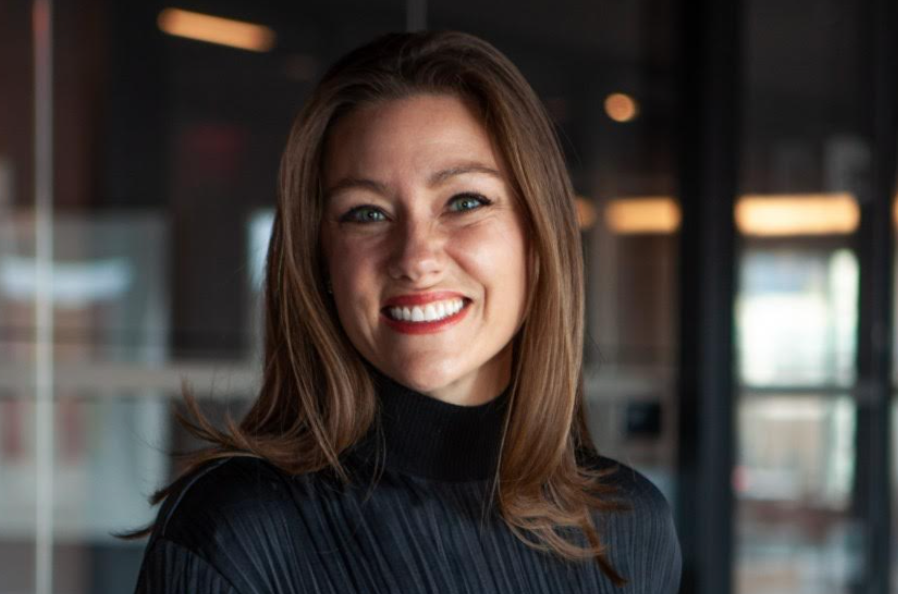Type 1 Diabetes is, by its nature, an invisible disease. An incurable, lifelong, invisible disease.
I was diagnosed at age 5, decades before companies like Dexcom and Omnipod developed glucose monitoring systems and wireless pumps. Decades before Lila Moss rocked the runway with her Omnipod proudly displayed on her bare upper thigh. Decades before Disney Pixar’s new film “Turning Red” added a minor detail on the arm of a character – what is believed to be a Dexcom device – and put a visible spotlight on an invisible, and largely unknown, disease.
A type 1 diagnosis in the 1980s meant that I learned at age 7 to practice delivering insulin the good old fashion way – injecting a syringe into an orange. It meant I could largely blend in, refusing to give power to a piece of myself that required, on average, 180 extra decisions every day than my average peer. 180 extra decisions every day.
I grew up internalizing the mantra: Invisibility was inextricably linked to control. Control of food intake, control of exercise, control of stress, control of sleep, control of blood sugar. A lifetime of control was the goal and invisibility was the reward. In the absence of that control, a plethora of highly visible physical ailments could emerge: at its least threatening, hypoglycemia meant fatigue, irritability, sweating, confusion; at its worst, long-term hyperglycemia meant potential kidney damage, cardiovascular disease, blindness, death. I did my best to ignore those frightening realizations. Most days, I made it through with good blood sugars. Some days, the mental strain and exhaustion became debilitating.
I performed at high levels – in academia and on the sports fields – in spite of this disease. I took pride in my ability to, when I had the choice, hide this part of myself. An all-state field hockey selection in high school, I refrained from disclosing my type 1 diagnosis to the Division 1 schools recruiting me until the scholarship money was already on the table. I believed this data point would affect the scholarships granted and it would be viewed as a weakness. I kept the circle of those “in the know” close. I kept my stash of starbursts hidden. I injected in silence – on the field, in the classroom and as I transitioned into the world of business – in the office.
And then, a simple question changed everything. At age 29, when pregnant with my first child, I was introduced to Jason Baker, endocrinologist at Weill Cornell, Chair of the nonprofit Marjorie’s Fund, himself a type 1 diabetic. By this time, I had made 1,576,800 more decisions than the average woman of my age. In our first meeting, Jason listened to my story and asked if I was “in the closet” with my diabetes. Startled, I pondered the question. I resisted my initial response to say no, to defend. I sat with the discomfort.
For the first time, I examined my relationship with this part of myself I had chosen to largely keep hidden. Following that meeting, Jason became my endo. I made the bold decision, one of the extra 180 healthcare decisions for me that day, to take the first microsteps to making the invisible visible: I went on the Omnipod pump and adopted the Dexcom. I was committed to delivering a healthy baby boy.
As an executive with one of the leading professional services firms, I sat in the boardroom of a Fortune 100 company, meeting with a C-level leader, a few weeks after taking these first Microsteps. This was our first meeting together and the air in the room was noticeably stiff. We were a few minutes in, barely through introductions, when an alarming, ear-shattering ring emerged from my Omnipod monitor: I had an Omnipod failure. I noticed a tingling of annoyance climb up the back of my neck at this abrasive disruption, felt the swelling of long-hidden shame bubbling up to the surface. Taking out my monitor, secured on my lower back, I silenced the sound. The executive, startled, looked confused. I made a choice. “I’m type 1 diabetic,” I told the client. “If you don’t mind, I will need to inject right here, so we can get back to our meeting.” The air in the room shifted. She smiled, “My grandfather was diabetic,” she said. “Inject away.”
Those first steps opened up a stairwell of opportunity. I joined the board of Marjorie’s Fund. I leaned into a new community of friends living with this invisible disease, many of whom had found strength in the network of others united around this common reality. I gave voice to a part of myself I had previously conditioned to silence. I embraced the superhero nature of my diagnosis. Like sports, type 1 diabetes had made me who I was. The habits developed in youth – eat right, exercise regularly, sleep eight hours, moderate – were imprinted on me and coded into the way I lived. But making those daily choices visible transformed me.
I fully integrated this part of myself into my story, embraced its impact on my resiliency, my tenacity, my empathy for others. This intentional integration became a source of strength, a source of power, a new source of choice. This choice also made me more human: a more authentic leader with my team, a more trustworthy confidant to my clients, a more self-assured mother to my sons.
Stigmas swell in silence. By making the invisible visible, we step into our power, our vulnerability, our light.


